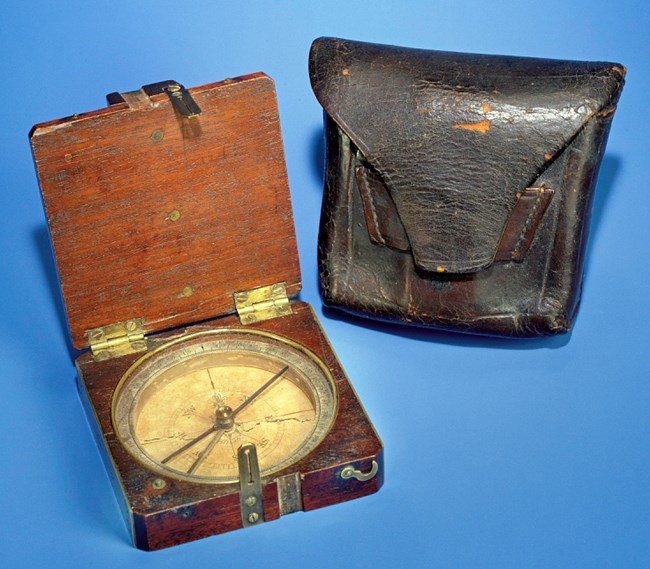Last updated: January 29, 2019
Article
Lewis’s Compass

Photo: Smithsonian Institution
This compass has a mahogany box, a silver-plated brass rim that’s graduated to degrees and numbered in quadrants from north and south, a paper dial, two small brass sight vanes, and a leather carrying case. Its size is small: 3.5” x 3.5” x1.5”. It’s not known if Lewis purchased this compass for himself or if he intended to give it to William Clark as a special gift.
When the Corps of Discovery returned to St. Louis in September 1806, few of the instruments remained. This compass, however, was kept by Clark as a memento. He later gave it to his friend, Captain Robert McCabe, whose heirs donated it to the Smithsonian Institution in 1933. It remains today in the collection of The National Museum of American History in Washington, D.C.
